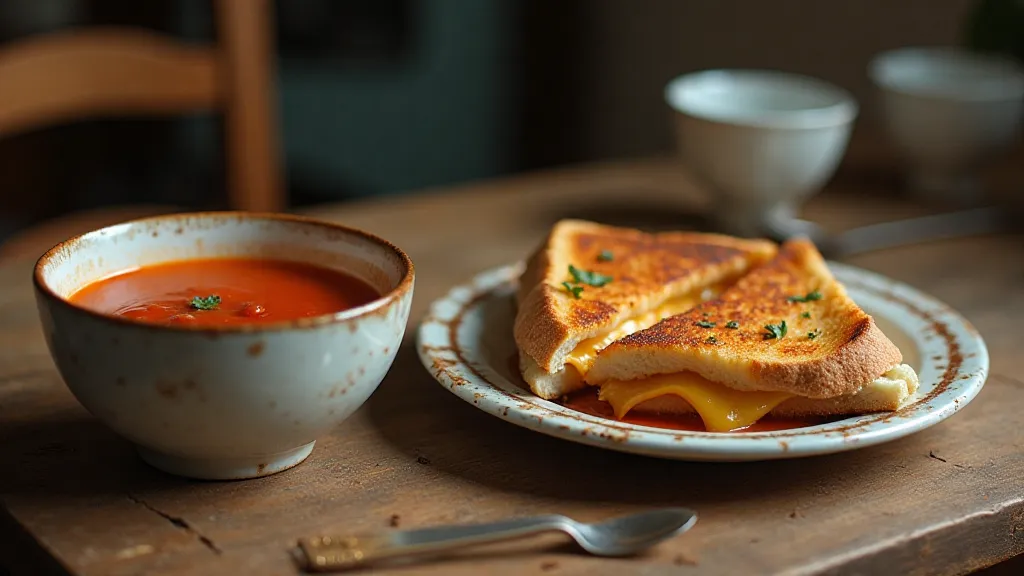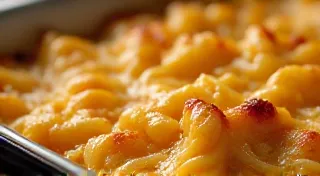Tomato Soup and Grilled Cheese: A Classic Budget Combo
The aroma of simmering tomatoes and the satisfying crunch of a grilled cheese sandwich – these simple comforts evoke a sense of nostalgia for many. But for those living through the Great Depression, tomato soup and grilled cheese wasn't just a comfort meal, it was a lifeline. A readily available, incredibly cheap, and surprisingly nourishing combination that stretched meager resources and provided a much-needed boost in a time of hardship.
The Context: Feeding Families on a Dime
The Great Depression, lasting from 1929 to the late 1930s, brought widespread unemployment and poverty. Families struggled to put food on the table, and frugality was not a virtue, but a necessity. Every ingredient had to be used to its fullest potential. Expensive cuts of meat were rare, and elaborate meals were a distant memory. Instead, resourceful cooks relied on inexpensive staples like tomatoes (often canned during peak harvest), flour, milk, and cheese – readily available, or at least attainable – to create filling and relatively palatable meals. The sheer ingenuity required to create satisfying meals with so little is remarkable, and sometimes resulted in unexpected and delicious outcomes. Just as resourceful cooks mastered the art of utilizing every scrap, some found comfort and even a touch of sweetness in incredibly simple recipes – like the beloved oatmeal cookies that became a staple in many households.

The Depression-Era Tomato Soup Recipe
Unlike the cream-laden tomato soups we often enjoy today, Depression-era tomato soup was all about maximizing flavor with minimal ingredients. Here's a recipe inspired by the resourcefulness of the time:
Ingredients:
- 2 lbs ripe tomatoes (or 2 large cans of crushed tomatoes)
- 1 medium onion, chopped
- 2 cups water
- 1 tablespoon butter or shortening
- Salt and pepper to taste
- Pinch of sugar (optional, to balance acidity)
Instructions:
- If using fresh tomatoes, blanch them in boiling water for 30 seconds, then peel and chop.
- In a large pot, melt the butter or shortening over medium heat. Add the onion and cook until softened, about 3-5 minutes.
- Add the tomatoes and water to the pot. Bring to a boil, then reduce heat and simmer for 30-45 minutes, or until the tomatoes are very soft.
- Carefully transfer the soup to a blender or use an immersion blender to puree until smooth. (In the Depression era, this was done through a sieve!)
- Return the soup to the pot. Season with salt, pepper, and a pinch of sugar if desired. Simmer for a few more minutes.
The Humble Grilled Cheese Sandwich
The grilled cheese wasn’t always the elaborate affair we know today. Often it was simply bread and cheese, toasted in butter or lard. This simplicity underscores a common thread during this era – a deep respect for ingredients and an unwillingness to waste a single crumb. It's easy to imagine a family sitting down to a meal of tomato soup and grilled cheese, a moment of quiet togetherness in a time of uncertainty, and evoking a certain melancholy, a silent supper filled with unspoken feelings and a shared understanding of hardship.
Ingredients:
- 2 slices of bread (often day-old bread was preferred)
- 1-2 slices of cheese (cheddar, American, or whatever was available)
- 1-2 tablespoons butter or lard
Instructions:
- Spread one side of each slice of bread with butter or lard.
- Place one slice of bread, butter-side down, in a skillet over medium heat.
- Place the cheese on top of the bread.
- Top with the other slice of bread, butter-side up.
- Cook for 3-4 minutes per side, or until the bread is golden brown and the cheese is melted.

Why This Combination Endured
The tomato soup and grilled cheese combination wasn't about gourmet dining; it was about sustenance and affordability. Tomatoes provided vitamins and a small amount of protein. The cheese (even a small amount) added fat and calcium. The bread filled the stomach and provided carbohydrates for energy. It was a pragmatic solution to a very real problem – how to feed a family with limited resources. The story of the Great Depression is so much more than just statistics and timelines; it's a mosaic of individual experiences, often marked by a pervasive sense of loss. It's a time captured in poignant imagery, a dust bowl's table laid bare, showcasing both the scarcity and the quiet dignity of those who endured.
But beyond the nutritional value, it offered something more: a familiar and comforting ritual during a time of immense uncertainty. It was a taste of normalcy in a world that felt anything but. The simple act of making and sharing this meal provided a sense of connection and hope amidst the hardship of the Great Depression. During a time of hardship, every shared moment became a treasure, and even the simplest of meals represented a refuge from the surrounding despair.

The Resourcefulness and Resilience of the Era
The resourcefulness demonstrated by cooks during the Great Depression wasn’t merely about survival; it was about preserving dignity and maintaining hope. They transformed hardship into opportunity, finding creative ways to nourish families and strengthen communities. The ability to stretch meager ingredients and find satisfaction in simplicity spoke volumes about the human spirit's capacity for adaptation and resilience. It's a reminder that even in the face of adversity, human ingenuity can blossom. The stories from that era often involve a quiet beauty, a sense of melancholic acceptance of circumstance, an alchemy of sorts, transforming loss into sustenance, and crafting moments of joy from the ashes of despair. This mindset is reflective of the ability to find beauty in the simplest of things, and a testament to the ability to carry on despite profound loss.
A Lasting Legacy
The tomato soup and grilled cheese combination remains a powerful symbol of the Great Depression – a delicious reminder of a challenging era and a testament to the power of resourceful cooking. It's more than just a meal; it’s a cultural touchstone, evoking feelings of nostalgia and a deeper appreciation for the abundance we enjoy today. It’s a taste of history, a connection to the past, and a celebration of the enduring spirit of the American people. It is a simple meal that tells a complex story. And it’s likely to endure as a beloved classic for generations to come.





